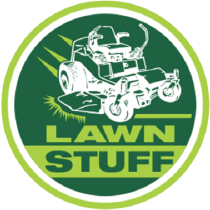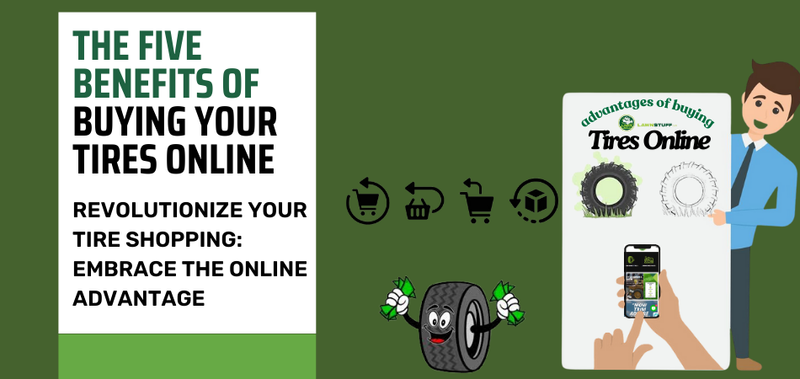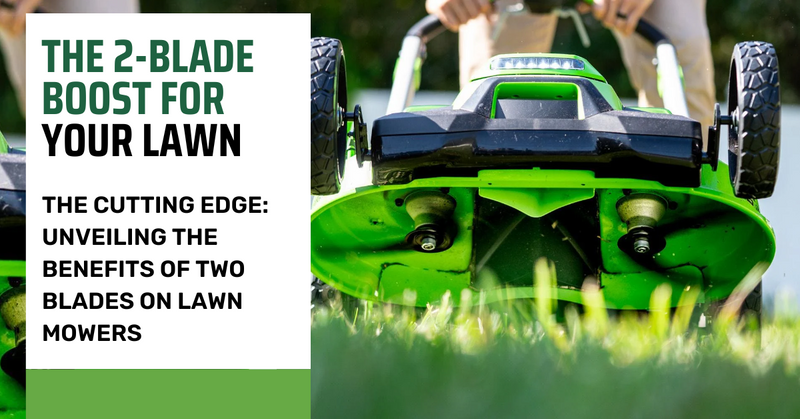

Your lawn mower's tires might not be the first thing that comes to mind when you think about maintaining your yard, but they play a crucial role in achieving that perfect cut. Improper tire pressure can lead to uneven mowing, poor traction, and even damage to your lawn. In this comprehensive guide, we'll delve into the world of lawn mower tires, exploring everything from tire pressure recommendations to tips for choosing the right type of tire for your specific needs.
What Pressure Should Lawn Mower Tires Be?
Maintaining the correct tire pressure is essential for optimal lawn mower performance. Here's the lowdown:
- Front Tires: Typically 14 PSI
- Rear Tires: Typically 10 PSI
- Always Check the Sidewall: The tire manufacturer's recommended pressure range will be listed on the sidewall of each tire. It's best to follow their recommendations, as they take into account the specific construction of your tires.
- Use a tire pressure gauge to check the pressure.
- Inflate or deflate as needed using a bike pump or air compressor.
- Check all tires regularly, especially during temperature fluctuations, as tire pressure can change with the weather.
- Too High: Reduced traction, bumpy ride, potential damage to the lawn.
- Too Low: Uneven cutting, excessive wear on tires, potential for tires to come off the rim.
Types of Lawn Mower Tires: Choosing the Right Fit

Different lawn mowers and terrains require different types of tires. Consider these factors when selecting tires:
-
Tread Pattern:
- Turf Tread: Gentle on your lawn, good for general use.
- All-Terrain Tread: Provides better traction on uneven terrain and slopes.
- Ribbed Tread: Offers a smoother ride on paved surfaces.
- Tire Size: The right tire size depends on your mower model. Refer to your owner's manual for specific recommendations.
- Tube vs. Tubeless: Tubeless tires are generally more puncture-resistant, but tube tires can be repaired more easily in case of a flat.
Lawn Mower Tire Maintenance

Taking care of your lawn mower tires can extend their life and ensure consistent performance.
- Regularly Check Tire Pressure: As mentioned earlier, consistent pressure checks are crucial for maintaining optimal performance.
- Inspect for Wear and Damage: Look for cracks, cuts, or punctures in the tread and sidewall. Replace damaged tires promptly.
- Clean the Tires After Each Use: Remove grass clippings, dirt, and debris to prevent buildup, which can contribute to wear and tear.
- Store Your Mower Properly: When not in use, store your mower in a cool, dry place to prevent tire deterioration.
FAQ's About Lawn Mower Tires
- Can I use car tire pressure for my lawn mower? No, car tires are designed for different loads and speeds than lawn mower tires. Always follow the recommended pressure for your specific lawn mower tires.
- How often should I change my lawn mower tires? It depends on usage and wear. Inspect your tires regularly for damage, and replace them when the tread is worn or if they show signs of significant cracking or punctures.
Tire Pressure Affects Lawnmower Cut Quality
Believe it or not, the air pressure in your lawn mower's tires can significantly impact the quality of your cut.
- Uneven Cutting: Under-inflated tires can cause one side of the mowing deck to dip lower than the other. This results in an uneven cut, leaving some areas of your lawn shorter than others.
- Scalping: Over-inflated tires can reduce traction, causing the mower to bounce and the blades to dig into the turf, resulting in unsightly scalping.
- Clumping: Inconsistent tire pressure can disrupt airflow under the deck, leading to clumping of grass clippings instead of even dispersal.
- Poor Maneuverability: Tires with improper pressure can make your mower harder to steer and control, affecting your ability to achieve precise lines and navigate obstacles.
The Takeaway:
Maintaining the correct tire pressure isn't just about preserving your tires; it's about ensuring a beautiful, even cut on your lawn. By regularly checking and adjusting your tire pressure, you'll enjoy a smoother mowing experience and a picture-perfect lawn.
The air pressure in your lawn mower's tires isn't just about traction and ride comfort—it has a direct and significant impact on the quality of your lawn's cut. Here's how:
- Uneven Cut: Under-inflated tires cause the mower deck to tilt, resulting in one side cutting lower than the other. This leaves an unsightly patchwork of varying grass lengths across your lawn.
- Scalping: Over-inflated tires reduce the tire's contact patch with the ground, making the mower prone to bouncing. This bouncing can cause the blades to dig into the turf, leaving patches of bare, scalped ground.
- Clumping: Inconsistent tire pressure disrupts the airflow beneath the mower deck. Instead of being evenly dispersed, grass clippings can clump together, creating an unkempt appearance and potentially smothering your lawn.
- Impaired Maneuverability: Tires with improper pressure make steering and maneuvering your mower more difficult. This can result in uneven lines, missed spots, and damage to landscaping features.
The Bottom Line: Properly inflated tires are essential for achieving a consistent, professional-looking cut. Before you start mowing, take a moment to check and adjust the pressure in all four tires to the manufacturer's recommended levels. This simple step will dramatically improve the appearance of your lawn and enhance your mowing experience.
Remember: Don't just "eyeball" tire pressure. Use a reliable tire gauge to ensure accuracy. And don't forget to check your owner's manual for your mower's specific tire pressure recommendations.
Pro Tip: Before you start mowing, take a few minutes to check the tire pressure on all four tires. This simple step can make a world of difference in the quality of your cut and the overall health of your lawn.
In Conclusion: Your Lawn Mower Tires—Small Details, Big Impact
Your lawn mower's tires may seem like a minor detail in the grand scheme of lawn care, but as we've explored in this guide, they play a pivotal role in achieving a healthy, beautifully manicured lawn.
By understanding and prioritizing tire pressure, selecting the right type of tire for your specific needs, and implementing regular maintenance practices, you can maximize your mower's performance, extend the lifespan of your tires, and most importantly, achieve that coveted, professional-looking cut on your lawn.
Remember, a well-maintained lawn mower is a happy lawn mower, and happy lawn mowers create stunning lawns. So, take the time to give your tires the attention they deserve – your lawn will thank you!











